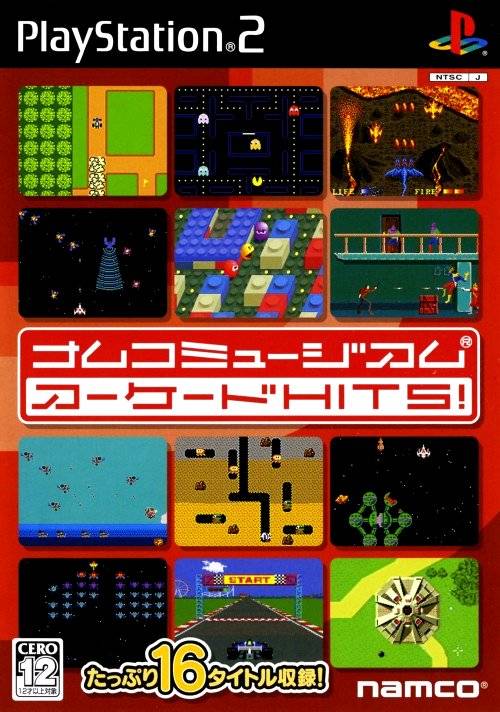


All that's been added is a cool rendered interface, with game selection as easy as rotating to the proper arcade machine. No historical elements, no creator notes, no trivia, no nothing.

But what else was done for this new package? Nothing. Though it's not very comfortable to play this way on the GBA SP, this "tall" mode works extremely well on the upcoming Game Boy Micro. Pac-Man, Galaga, and Dig Dug all originally used vertically oriented video monitors, and these ports allow the player to switch from a squished or scrolling mode to a mode that turns the image 90 degrees, using the GBA's wider resolution to accurately simulate the original games' aspect ratio. Like that Atari collection, Namco Museum's collection of games are near spot-on to the arcade counterpart, and even includes different video modes to display the action. This team has pulled off some great classic reproductions on the GBA, including the darn fine Atari Anniversary Advance. As classic as the game is, it just doesn't justify a new package, especially since this current collection's being priced around The arcade games were ported by Digital Eclipse, a name not unfamiliar to the world of retrogaming.
Namco museum 50th anniversary game boy advance series#
Pac-Man, Dig Dug, and Galaga are already on the original GBA Namco Museum, with Pac-Man showing up in Pac-Man Collection as well as last year's Classic NES Series edition. Instead, what we got were new reprogrammings of games that have already been released on the GBA: Ms. So when Namco announced Namco Museum: 50th Anniversary for the GBA, we were expecting a new compilation of classics that we haven't yet experienced on the handheld., especially since this was to be a collection that celebrates the company's huge milestone. Those two game collections can still be picked up at the local game shops for a budget 20 dollars. Fast forward to almost exactly four years later. The only thing missing was a chip to save high scores, but at the time publishers were saving that extra expense for games that couldn't survive without the save RAM. Both games were highly recommended cartridges for the GBA because the development team did a great job reproducing the arcade titles on the handheld hardware. Nothing special here, folks.īack when the Game Boy Advance launched in 2001, Mass Media was put to the task of creating two packages: Namco Museum, a collection of five classic Namco arcade games of varying genres, and Pac-Man Collection, a grouping of several games that starred the company's most recognizable hero. It essentially recycles games that have already been on the Game Boy Advance platform since day one and repackages them with a new front end. You would think that a game that celebrates a company's 50th Anniversary would be something special, something extraordinary, something that says, "Hey, check out what makes us so great!" But nope, Namco Museum: 50th Anniversary is a pretty routine and basic compilation of games that barely scratches the historical surface of the gaming giant.


 0 kommentar(er)
0 kommentar(er)
